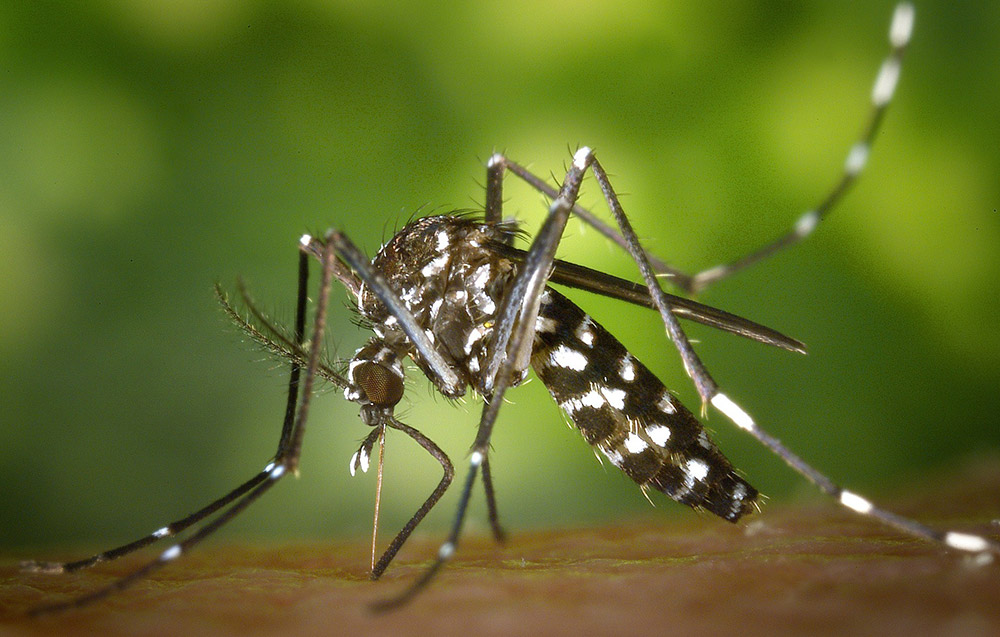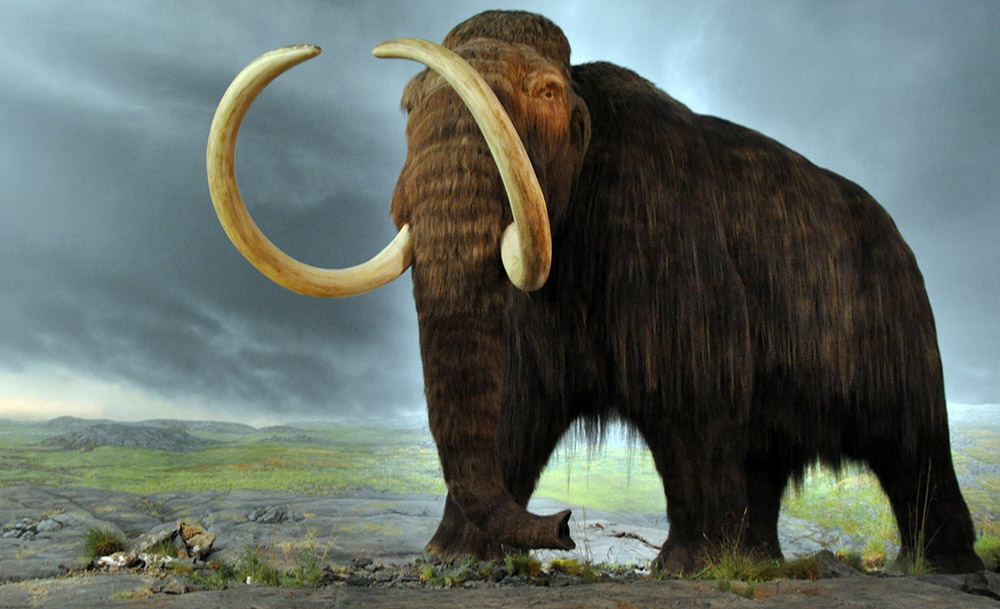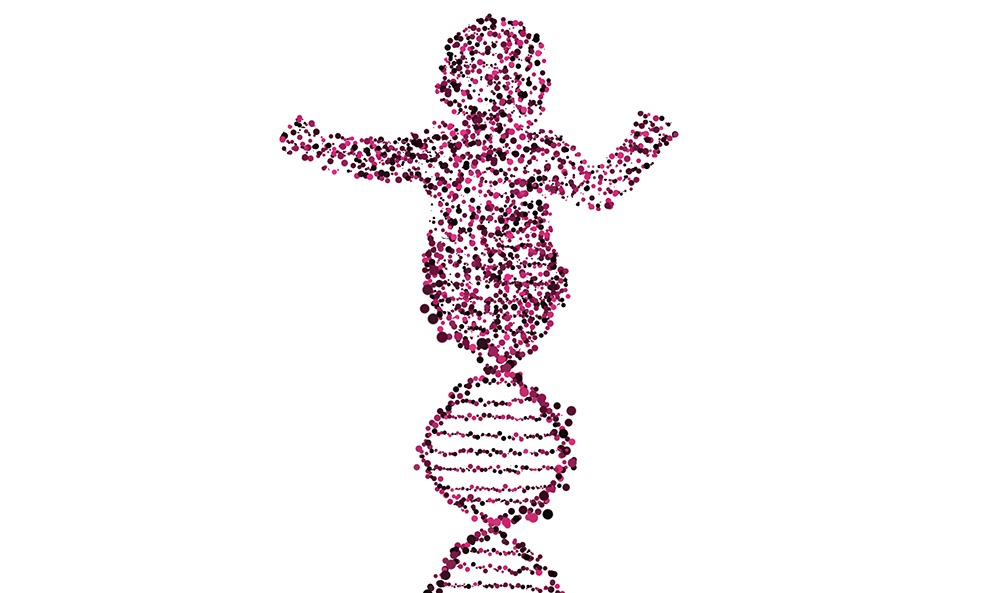The huge list of CRISPR uses
The CRISPR/Cas9 gene editing technique has been lauded as one of the most significant advances in medicine, science even, in a generation.
Genetic editing has been possible for over 40 years – the first GMO bacteria and mice were created in 1973 and 1974 – but the process has remained expensive, time consuming and relatively limited in its scope.
Compared to these traditional methods, CRISPR is not so much like bringing a gun to a knife fight, more bringing an Apache chopper to a pub fight. The hype surrounding CRISPR is so hot right now there’s even a TV show, produced by Jennifer Lopez, reportedly in development; if that doesn’t spell establishment status, not much else does.
CRISPR is so powerful it has literally allowed scientists to create alien life
CRISPR, or Clustered Regularly Interspaced Short Palindromic Repeats to give it its full name, is actually only one half of the process, with Cas9 being the other half. When combined, CRISPR/Cas9 is a very simple, very cheap way of identifying and changings genes. The Cas9 protein sniffs out the exact genes while the CRISPR makes the change.
For a slightly better informed explanation, watch this video:
Or download our whitepaper to read more about the history and development of CRISPR:

Download our whitepaper: CRISPR From Academia to Commercialization
CRISPR is not the scientific community’s equivalent of gluten free either and will genuinely remain at the forefront of research, long after we’ve all gone back to stuffing ourselves with lovely, lovely bread. While the patent of the technique has been undergoing only recently resolved legal disputes, it does not appear that the continuing improvement of the technique has been hindered with a team from Western University in Ontario claiming to already have doubled the capacity for choppin’.
And unlike other scientific methods, CRISPR is easy. Well, easy if you’ve already got a PhD or at least a super keen eye for detail, you probably can’t do it accidentally knocking up a fried egg. There is however, for the more cautious drivers, an emergency brake embedded in the system – it really is that clever.
The potential is such that even the possibilities for new uses is almost a research task in its own right, a task we are embracing. In this article, we’ll look at some of the best and the weirdest declared uses for CRISPR so far, and we’ll be updating going forward.
-
Cure malaria – in mosquitoes

Malaria has killed more people than all the wars in history combined. Efforts to stop the spread have focused on post-infection treatments or prevention attempts like mosquito nets.
If the spread of malaria is the bonfire, chucking cups of water on it isn’t doing much to put it out. Instead of focusing on making bigger cups, scientists at the University of California have dampened the matches.
By using CRISPR to introduce modified genes into the insects that spread the disease, populations of the mosquitoes can become resistant to the malaria-causing parasites. You’d still need a net to stop yourself from being bitten, but a nuisance is a lot easier to handle than disease.
This approach is not only hoped to save human lives, particularly in developing countries, but also endangered species of birds in Hawaii.
-
CRISPR + stem
While trends always aspire (and typically fail) to become traditions, jumping on a trend’s bandwagon is as traditional as apple pie and getting beaten up at school. Even though we’re all universally guilty of it, no one really likes bandwagon jumpers and the only thing worse is someone who tries to merge trends, no one wants that gluten-free 3d printed craft beer.
However, you get a pass when your merging of two trends is both ingenious and lifesaving. If gene editing is in vogue right now, its predecessor as soon-to-be-huge-but-always-just-around-the-corner is most definitely stem cell technology.
If CRISPR editing is the cut and paste of the genetic engineering toolkit, then stem cells are the words and punctuation, equally capable of becoming Tolstoy or teacake recipes.
The team at the Allen Institute in Seattle have used CRISPR to colour code stem cells, allowing them to be better observed, and therefore understood.
-
Resurrect the woolly mammoth

There is nothing more scientists, as well as the covering press, love, than science fiction shrugging off the fiction label. While we maybe still some way off from light speed engines and time travel, CRISPR could be about to bring the science of Jurassic Park to reality, sort of.
As DNA typically tends to not last the millions of years since the last dinosaur succumbed to the peer pressure and turned into a pigeon, only animals extinct in the much more recent past will be revived, or become ‘de-extinct’.
The most iconic of these, is of course the woolly mammoth. Extinct only for the last 4,000 years, or the last time The Simpsons was actually funny, there are plenty of lovely chunks of DNA to mess around with.
Harvard scientists are using some of these chunks to try and figure out which genes specifically separate the mammoth from its threadbare cousin and, when that’s known, re-insert these genes into an elephant embryo. The team claim the elephant-mammoth hybrid could be just two years away.
-
Dinosaur chickens
The idea that dinosaurs involved into modern day birds is now widely accepted as one of the most embarrassing family trees, rivalled only by the Chihuahua’s descent from wolves.
In an attempt to understand better the delicate nuances and outright absurdities of evolution, scientists from University of Chicago are using CRISPR to reverse engineer some of the intermediary species between dinosaur and bird. Early results from the experiments have already highlighted the development of the beak.
-
Cure diseases – all of them

Medical research was so much easier back in the old days; when someone is sealing up your severed leg with a red-hot poker, suggesting maybe using some tightly wrapped, clean bandages made you look like a genius.
All that changed in the 20th century though when medicine’s rapid advances meant you had to do more than wash your hands to be called a pioneer. Vaccines for smallpox and polio as well as penicillin, organ transplants and MRI scanners have all put paid to plenty of diseases, leaving only the tough ones to sort.
With so much focus on medical research and development, if a disease was anything more than faintly possible to cure, it would have been by now. What medicine has been crying out for is a new tool to provide a fresh approach to disease which have resisted current medical procedures…
Teams around the world have already made significant progress using CRISPR to attack cancer, HIV, Alzheimer’s, sickle-cell disease, Lyme disease and heart disease.
-
Keep mushrooms fresh
It could be that scientists want to reduce the amount of food wasted in the developed world as well as feed those in developing countries, or they’re just fed up of finding their mushrooms out of date when they fancy an omelette, if the outcome is the former, the original intention is academic.
By using CRISPR, it should be possible to not only extend the shelf life of some of the most perishable foods but also increase harvest yield, resistance to common diseases and even nutritional content.
-
Avenge the Three Blind Mice
They’re actually rats, but the three blind rats nursery tale never quite took off on the grounds of not adding to children’s nightmares. A team from California’s Salk Institute has managed to restore the sight of the rats by replacing the faulty genes, essentially removing the genetic disease retinitis pigmentosa.
Like other advances with CRISPR, the rapidity of the development is down to the ease of the process; putting clinical trials as close as just five years away is considered a cautious prediction.
The farmer’s wife best watch out.
-
Create super pigs
Pig flu, or rather, Porcine Reproductive and Respiratory Syndrome Virus (PRRSV), is the worst nightmare of pig farmers the world over – apart from maybe Animal Farm.
Capable of afflicting any hoofed animal, once the contagious disease is in a pen, little can be done to stop the spread, causing miscarriages and death and costing the US economy alone $600 million (£493 million) a year.
Vaccines have so far proved ineffective and continuing to pump pigs full of antibiotics not only doesn’t help keep livestock healthy, it contributes to the increasingly panic-inducing impotence of antibiotics.
CRISPR is once again on hand to save the day; by breeding three piglets with CRISPR-modified genes, University of Missouri scientists have managed to completely prevent not only infection, but even contamination. Subsequent tests showed the edited piglets’ immune systems hadn’t even bothered to try and produce antibodies.
-
…And transplant their organs into humans
And sticking with pigs, xenotransplantation, the process of transplanting organs from one species, typically pigs, to another, ideally humans, was once hoped to be the solution to the perennial shortage of suitable organ donors.
Efforts continually failed, not just because the idea is somehow patently weird, but the ability of the host immune system to deal with the donor’s baggage, even with incredibly powerful immunosuppressive drugs. It’s not so much a square peg in a round hole as a square peg in a lasagne, they just don’t jive.
CRISPR allows Boston scientists at eGenesis to rapidly edit pig genes to prevent rejection and reduce the chances of infection. What was once seen as a good idea with little chance of reality, could feasibly now be in human clinical trials by 2020.
-
Discover aliens, kind of
Most things on this list are new things, kind of, they are new solutions to existing problems. But this new thing, created at the Scripps Research Institute in California is entirely new, so new it doesn’t even have a name.
Everything everywhere has DNA made up of four bases, represented by the letters, G, T, C and A, and has had these forever. This thing, has six, the original four plus an X and a Y. The team used some other chemical wizardry to add the two extra bases to a certain breed of the E. coli virus and CRISPR was enlisted to make sure the thing accepted the new bases.
CRISPR is so powerful it has literally allowed scientists to create alien life.
The possible uses, as well as the moral implications, are complete unknowns – a prospect which is simultaneously blood-curdlingly terrifying, mind-bogglingly interesting and spirit-surgingly hopeful.
-
Cause intense moral arguments, and designer babies

The idea of designer babies has been bandied around for years now, epitomising the phrase “just because you can, doesn’t mean you should” and that was fine, because you couldn’t at the time. That kept the debate in the hypothetical realm, like prank calling Gandhi for a million dollars.
But then CRISPR came along and not only resurrected Gandhi, but publicly listed his number and the hours he’s home.
Using CRISPR to create so-called designer babies could not only eliminate hereditary diseases and other conditions but essentially create super humans.
The moral dilemma is an entire subject in itself, and one that’s almost certainly to have not been satisfactorily addressed before we see the first designer babies beating everyone else on sports day.
-
Power the world
Despite the worryingly large number of powerful people in the world adamantly denying climate change in the face of overwhelming evidence, none of them ever seem to address the issue that fossil fuels are running out, whether they’re turning the planet into a sweaty asthmatic or not.
While much of the uses for CRISPR have focused on a smaller scale, a team of researchers in California are working on a way of editing a strain of yeast which could essentially provide cheap, mass produced biofuels.
Not only could this reduce the dependency on fossil fuels, but also reduce the cost of the raw materials needed to produce current biofuels.
-
Create even scarier bioweapons
The current crop of bioweapons is more than likely enough to ruin a buffet or two but like any new invention, there’s always someone wondering how best to use it to kill more people, more efficiently than before.
A curious quirk of human development seems to overlook overkill, especially when it comes to arsenals, case in point, at the height of the Cold War, Russia and the US had somewhere in the region of 60,000 nukes between them – that’s enough to carpet bomb Jupiter.
Unfortunately, CRISPR is unlikely to be any different. The same techniques used to pinpoint possibilities for saving lives can also be used to remove abilities for curing a virus, potentially making something as pedestrian as the common cold a lethal, incurable epidemic.
-
CRISPR on the cob
Corn, or maize, is one of the most popular staple foods in the world, found in every kitchen and pantry the world over, surpassed only by those weird little red candies that appear in cupboards spontaneously.
Despite, or perhaps because of, corn’s ubiquitousness, its growth, production and distribution is massively affected by the weather; any drought or flood, or natural disaster, and people can starve.
By using CRISPR to edit the crop’s genes, it’s hoped that corn’s resistance to drought or, perhaps most importantly, an increasing temperature can be radically changed. The team from DuPont hopes to have a commercially viable version of the corn within the next five years, early reports suggest cinemas will be able to charge even more.
-
Speed up photosynthesis
Practically all plants use photosynthesis and will quickly turn yellow and wither without sunlight but a plant subjected to constant sunlight won’t just continue to process the lovely rays into food. What happens instead is they can sunburn quicker than the first day of a lads’ holiday.
To counter this, most plants evolved a shield which stops photosynthesis and converts the excessive light into heat to prevent damage. The problem with this process, at least for the harvest if not for the plant, is the speed at which the photosynthesis is reactivated once it’s safe.
Scientists at the Australian National University in Canberra have used CRISPR to modify this shield in a species of tobacco plant, and just the first experiment produced a 20 per cent higher yield.
The development could reignite the green revolution led by Norman Borlaug’s corn improvements and lead to even greater crop yields.
-
Cure chesty cows
You might not have ever heard a cow cough but tuberculosis kills millions of cows worldwide every year. As beef is the third most consumed meat in the world and no one wants to listen to a cow desperately trying to unwrap cough drops in the cinema, it’s hoped CRISPR can once again come to the rescue.
Researchers from the Northwest A&F University in Shaanxi, China have inserted a new gene into the cow genome which has dramatically increased the animals’ ability to resist the disease.
-
Brew hangover proof booze

Curing diseases, feeding the world and rewriting the fundamental rules of life is all well and good but let’s face it, when you wake up after a night on the lash, who wouldn’t trade all that for a guaranteed hangover cure?
Well, researchers at the University of Illinois took that pipedream seriously and have been working on the genetic makeup of the yeast strain most commonly used in wine and beer making.
Not only could the – let’s call it what it is –miracle of genuinely hangover free alcohol be achieved, it would also be possible to boost the health benefits of wine as well as isolate the individual genes of the best flavours.